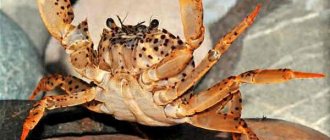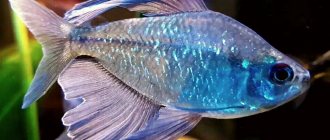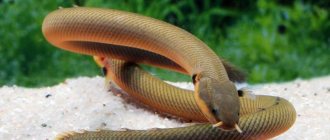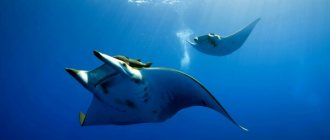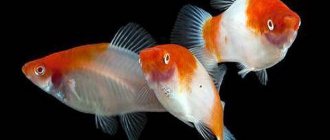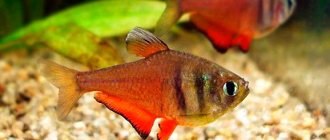Leopard Catfish or Corydoras trilineatus is often confused by aquarists with Corydoras Julii. But still, these are completely different aquarium fish. You can tell them apart by looking at the horizontal stripes on the catfish's body (the Leopard catfish have larger stripes). In addition to external similarity, these types of catfish have…
Leopard Catfish or Corydoras trilineatus is often confused by aquarists with Corydoras Julii. But still, these are completely different aquarium fish. You can tell them apart by looking at the horizontal stripes on the catfish's body (the Leopard catfish have larger stripes). In addition to their external similarity, these types of catfish also have similar requirements for the maintenance and care of the aquarium.
Leopard corydoras feel better if there are at least several of them in the aquarium, that is, a flock. It's very nice to watch such groups. There are quite interesting social relationships between individuals in a flock. Corydoras in general are one of the most commonly found catfish species in the home aquarium, mainly (in my opinion) due to their wit and personality.
Habitat
The Leopard or Brocade catfish was first described in 1854 by two researchers and received two names, respectively. Currently, in the scientific literature one can find two equally used names Pterygoplichthys gibbiceps and Glyptoperichthys gibbiceps. Catfish live in inland river systems in most areas of South America, particularly throughout Peru and the Brazilian Amazon. Requirements and conditions:
- Aquarium volume - from 380 l.
- Temperature - 23–30°C
- pH value – 6.5 – 8.0
- Water hardness - soft to medium hard (4–18 dH)
- Substrate type - any
- Lighting - normal
- Brackish water - no
- Water movement - moderate
Fish parameters:
- Size - 35 cm.
- Food - any food, mainly plant-based
- Life expectancy - up to 15 years
Reproduction
Fish farming: In the wild, leopard catfish spawn during the rainy season (October-November). Spawning is nesting (2-3 males and 1 female). Fish lay eggs on plant leaves and hard objects (flat stones or aquarium walls). Spawning aquarium with a volume of 40 liters and a length of 50-70 cm, sand with a layer of up to 0.5 cm, several bushes of small-leaved plants (Java moss), water is taken from a common aquarium, filtration using an airlift filter with a sponge. The spawners are transplanted into a spawning tank and fed generously with live food (bloodworms, daphnia) for 7-15 days. After the fish have settled in the new place, begin daily water changes of up to 40-70% (with dH parameters up to 10°, pH 6.5-7, T 21-22°C). The heater is turned off and aeration is increased. To prevent fungal damage to eggs, methylene blue is added to the water. Some aquarists recommend adding several cherry shrimp to an aquarium with eggs, which will eat the eggs affected by the fungus without touching the healthy ones. Sexual differences: when viewed from above, the male is slimmer and smaller than the female, the female’s abdomen is fuller and more convex. Puberty: occurs in the first year of life.
Quantity of caviar: up to 60 sticky eggs. Incubation period: 4-6 days. Offspring: juveniles swim for 3 days. The water temperature for raising fry is maintained at about 24°C. Daily water changes of up to 10% and cleaning of the aquarium are necessary. Feeding of fry: starting food - “live dust”, ciliates, rotifers, later - artemia nauplii, grindal. Removal from parents: after spawning, the spawners are removed.
Nutrition
Although this type of catfish is omnivorous, plant foods should still be the basis of their diet. Therefore, the diet must include sinking food with additives such as spinach, zucchini, lettuce, peas, etc., which should be fixed to the bottom of the aquarium, pressing down, for example, with a stone. Don't neglect vegetable flakes either. Once a week you can feed live food - brine shrimp, worms, small crustaceans, insect larvae. It is advisable to feed in the evening before turning off the lights. Catfish are known as algae lovers; they can clean an entire aquarium in a short time without damaging a single plant. Many aquarists purchase this type of catfish just to combat algae, not knowing what large fish they bought, since catfish are presented in the retail chain as fry. In the future, as she grows, she may become cramped in a small aquarium.
Compatibility
Corydoras in their natural habitat live in flocks, which can have either several members or a large number of them (up to 20-50). Therefore, it is not recommended to place Shellfish in a home tank alone; they will look timid and fearful, feel uncomfortable, and become stressed.
It is better to place a group of 8-10 catfish, but there should be at least 5 of them, with more males than females.
Corydoras is a peaceful fish; it gets along well with any non-aggressive species of underwater inhabitants - angelfish, zebrafish, swordtail, botia, barb, discus, guppies, gourami, mollies, platies, plecostomus, iris, rasbora, labeo, tetra.
Conflicts may arise with ancistrus if there is not enough bottom area.
They can easily move into an already working aquarium with neighbors. The main thing is that there are no goldfish, mastacembelus, astronotus, cichlids, Koi carp and other large predatory species there.
Maintenance and care
The chemical composition of water is not as important for catfish as its quality. Good filtration and regular water changes (10 - 15% every two weeks) will be the key to successful maintenance. Large fish require a spacious aquarium with a volume of at least 380 liters. In the design, a prerequisite is the presence of wood, which the catfish periodically “chews”, thus, it receives the microelements it needs for healthy digestion, in addition, colonies of algae grow well on it. Wood (driftwood or intertwined roots) also serves as shelter during daylight hours. Preference should be given to strong, large plants with a powerful root system; only this system will withstand the onslaught of catfish burrowing in the ground; in addition, delicate plants can become food.
Diseases
Diseases: signs of stress in leopard corydoras usually begin with rapid breathing, then lethargy sets in (often the fish simply “sit” on plant leaves, snags or substrate, breathing heavily, sometimes near the surface), sometimes the fish collapse to one side. If such signs occur, it is necessary to immediately replace at least 50% of the water with fresh water.
HOW TO DISTINGUISH A FEMALE FROM A MALE CORIDORAS?
HOW TO BREED CORYDORA CATFISH AT HOME?
RABAUTI CORRIDOR: CONTENT IN THE AQUARIUM, PHOTO
Catfish Changeling: DESCRIPTION, CONTENTS, NUTRITION, REPRODUCE, PHOTO
There is little light here - it is largely absorbed by dense and tall coastal vegetation, since rivers and streams inhabited by catfish slowly flow mainly under the canopy of the jungle.
And the slopes of the mountains, the foothills of which wash the catfish estates, prevent powerful insolation. In a word, leopard catfish, like most other representatives of the genus, are fans of twilight. This, however, does not at all exclude their “registration” in well-lit containers. In general, creating conditions in captivity in which these fish would feel at home is not at all difficult. Due to its compactness and lack of territoriality, Corydoras trilineatus can be kept and even bred in a relatively miniature reservoir: a 20-30-liter vessel is quite enough for the normal existence of 5-6 individuals. But it is still preferable to provide catfish with a more spacious home - 70-80 liters. Its depth is not of decisive importance, but the larger the base area, the better, because Corydoras are typically bottom-dwellers. Neons and other representatives of characins will be ideal neighbors for leopard corydoras and an additional decoration for the aquarium. They get along with corydoras better than ever, not creating oppressive competition in food and not posing a threat to young catfish. In this case, the soil needs to be soft, loose, medium-sized, without sharp chips, on which trilineatus can damage their delicate antennae, which help them navigate in space and find food. Ideal colors for soil: dark or light gray, black, dark brown, that is, contrasting with the color of both fish and plants. On pale brownish, light brick backgrounds, trilineatuses become completely invisible. The planting pattern is standard: dense thickets around the perimeter, sparse ones in the central zone and free space in the front part of the aquarium. It is advisable to form the rear jungle from soft and lush-leaved long-stemmed flora, while the center and flanks can be allocated to tapeworms with relatively large and hard foliage, which serves as a good substrate for the spawning of three-line corydoras. Depending on the size of the aquarium, these can be “plantain” echinodorus, broad-leaved cryptocorynes, etc. Anubias are also suitable for this purpose. For decoration, you can use stones and openwork snags with many small branches. Catfish happily scurry between them. There should be 2-3 cm of free space between the water surface and the cover glass (or flange); the corydoras periodically rise to the surface of the water to swallow the bubble of air they need for breathing. Three-lined corydoras are very unpretentious creatures. They can live both at 18-20 and at 30-32°C, in soft and hard water with a slightly acidic or slightly alkaline reaction. The optimum is standard for almost all corydoras: 22-25°C, dGH 8-12°, pH 6.5-7.0. The saturation of water with oxygen is not of fundamental importance; catfish are able to breathe atmospheric air. They are not very susceptible to moderate pollution of the environment with organic matter, but they highly respect fresh water and after changes - the more often, the more comfortable the fish feel - they noticeably perk up. Corydoras have enviable health and rarely get sick. The most typical pathology is injury to the antennae, which opens the way for secondary infections. That’s why rounded soil and the absence of pugnacious neighbors are so important. By the way, if the damaged fins of trilineatus are restored quite quickly, then the regeneration of the whiskers is a protracted process and does not always reach a successful completion. Feeding the leopard corydoras will also not cause problems. In nature, the basis of their diet is made up of benthic organisms, insect larvae, planktonic crustaceans, etc. Among the dishes there are also vegetarian products, but their share is insignificant. In aquariums, catfish spend whole days loitering above the bottom in search of food, which are particles of live, frozen or dry food left unattended by their neighbors. The faster the food sinks to the lower layers, the higher the chance that the catfish will find food to their liking and have time to eat before the food becomes the prey of more dexterous and nimble neighbors. The ideal food for them is live small bloodworms and tubifex, frozen brine shrimp and daphnia, dry fast-sinking granules and feed tablets, including those with plant components. Corydoras tirelessly examine the soil, persistently stir up its surface, study all the cracks between the decorations and, smelling food, do not calm down until they get it. This gave rise to considering numerous representatives of the genus Corydoras as aquarium orderlies, supposedly capable of clearing the container of debris and diligently engaged in this kind of cleaning. In fact, there is no reason to equate armored catfish with vacuum cleaners. These fish eat exclusively “healthy food” and are not at all interested in rot, detritus and other garbage. Moreover, digging in the ground, they willy-nilly disturb the silt and, in a poorly tidied container, become sources of suspended matter. So it is very useful to combine at least every 2-3rd water change with cleaning the soil with a siphon. Good aeration is not required in an aquarium with Corydoras. But a good filter will be very useful - if only because it will reduce the amount of suspended matter, improve the quality of the water, and even create a flow that is very much to the heart of the corridors. Three-line catfish belong to the group of corydoras, the breeding of which does not involve any special problems. Once they reach the reproductive stage, they willingly spawn even in a community aquarium, and in the absence of aggressors, their offspring have a high chance of survival. Trilineatus reach sexual maturity at 8-9 months; an excellent stimulator for spawning is changing the water to fresh, slightly cooler water. The addition of softened and acidified water, simulating rain, works great. The fertility of the three-line corydoras is quite low: up to fifty eggs, usually 20-30. They are small, about 1 mm in diameter, translucent, almost colorless, with a faint yellowish tint. Unlike many of their relatives, three-line corydoras do not necessarily form a compact clutch. The abundance of unfertilized eggs is typical only for young parents and in excessively hard (over 10°C) and alkaline water. As a rule, all dead embryos are detected within the first two days, and then the waste is minimal. If the eggs are laid on the leaves, you can transfer them, along with the base, to an incubator with water of similar parameters and a weak current created by an air compressor. However, observations in this case do not yield much: the shell of the eggs is cloudy, making it difficult to see what is happening inside. But it is better not to separate the eggs from the glass of the aquarium - you will not extinguish the research spark, and most likely you will destroy the future juveniles. Preparing the spawning tank (if spawning is provided for in it) will not take much time. For a couple of growers, a 20-30-liter container without soil, but with one or two bushes of microzorum or anubias, is quite enough. Technical equipment can be limited to a lamp. Even a heater is not necessary, since temperature does not play a significant role in the reproduction of leopard catfish, determining only the duration of egg development: from 6-8 days at 20-22°C to 3-5 at 23-25°C. The hatched larvae are quite small (about 5 mm long), colorless, and outwardly indistinguishable from the offspring of other corydoras. For the first 3-4 days they are almost motionless and feed from the resources of the impressive yolk sac. This time should be used to establish the “production” of Artemia nauplii or to provide a culture of living “dust”. They are the best starter feeds. Before serving, do not forget to thoroughly rinse the crustacean larvae, since the fry are as intolerant of salt as their parents. A more or less tolerable replacement for live food is an aqueous suspension of the yolk of a hard-boiled chicken egg. But it is better to use egg food only as a last resort, since the fry eat it without enthusiasm, and the yolk spoils the water very quickly, and cleanliness in the spawning tank is the key to successful rearing of the young. To get numerous offspring, it is better to change the water daily in the first week - 10%. From the second week we begin to gradually increase the water hardness in the spawning tank and include larger objects such as scraped bloodworms or finely chopped tubifex in the diet of the juveniles. In another week we will expand the menu with high-quality dry “fry” food. In favorable conditions and with abundant varied feeding, Corydoras trilineatus grow quite quickly, reaching 1.5 cm by the age of one month. At this time, the juveniles can be safely transferred to a common aquarium with peaceful inhabitants, where after another month the juveniles will appear before you as smaller copies of their parents - the same charming catfish, ideal for both beginners and experienced aquarists!
Choosing the right healthy catfish
Corydoras catfish have a strong immune system. Experts have not identified any diseases inherent in these aquarium fish. Corridors are able to withstand sudden changes in environmental conditions.
However, it is prohibited to use salt (sea salt, table salt) for pest prevention purposes.
When purchasing corydoras, take a closer look at the behavior of the selected specimen:
- It is not recommended to take fish that lie on the ground and do not respond to external stimuli.
- A healthy catfish is active, quickly swims to the surface, takes in air, and then easily swims to the bottom. The sick individual moves hesitantly and chaotically, falls over on one side or lies motionless on the bottom.
Signs of sick fish:
- stuck together fins;
- cloudy eyes with a film;
- damage to the antennae;
- sore or red gills.
Red-brown spots are an indicator of the presence of bacteria or fungi in the fish’s body. The sunken abdomen of the catfish indicates that it is exhausted or infected with helminths. A bulging abdomen may be the cause of some disease.
Do not rush to release new fish into a common tank. Keep them in quarantine for a while.
Thus, Corydoras catfish are schooling, cheerful and interesting fish. If you care for them properly, they will delight their owners for 15 long years.
Price
The cost of Corydoras catfish ranges from 89 to 490 rubles, depending on the species. The most expensive type is Corydoras dupilcareus, for which you will have to pay from 440 rubles. Julia's corridor costs from 270 rubles. Speckled and golden Corydoras are the most affordable fish, their cost is in the range of 90-100 rubles.
Corridors cost from 89 to 490 rubles
Types of Corydoras
About 180 species of corydoras are known. Let's look at the most famous ones.
Golden
This catfish is also called bronze. The color is golden with a bronze tint. Has a shiny line along the back. Grows to a size of 7 cm. Females are larger than males. In natural conditions they live in Trinidad.
Mottled
The most common among Corydoras. Speckled catfish is not picky about environmental conditions. Tolerates temperature fluctuations from 3 to 30 degrees Celsius and does without air. Reproduces under any conditions. It has gained popularity since the middle of the 19th century.
The color of the speckled catfish is olive-gray, with black spots unique in shape for each fish. There is a form of albinism. They are more demanding of external conditions. The fin on the back is sharp. Females are often twice as large as males. The body length of males is 4–6 cm, and females are up to 7 cm.
